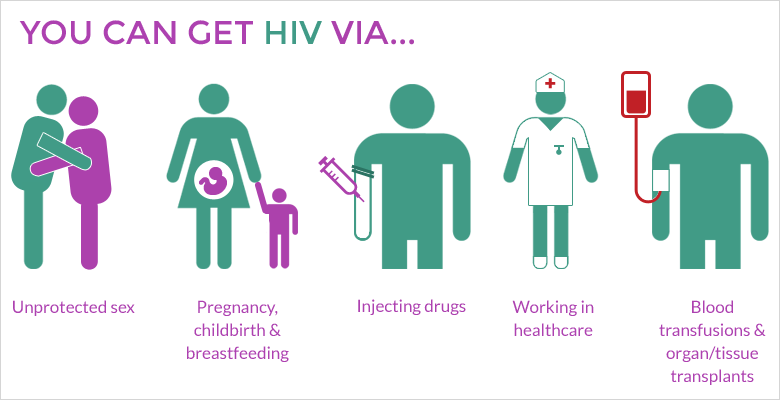
The HIV/AIDS remains one of the most important communicable diseases in the world. Globally, as at the end of 2015, an estimated 36.7 million people were living with HIV. About 5700 new HIV infections (adults and children) are reporting every day.
HIV awareness and education programs provide an opportunity to educate communities around the world about the importance of HIV prevention, research, HIV testing and the issues for particular population groups.

What is HIV/AIDS?
H – Human : This particular form of the virus infects to humans.
I – Immunodeficienc : HIV weakens the immune system by attacking its most important cells.
V – Virus : As a virus, HIV reproduces by taking over a healthy host cell.
HIV stands for human immunodeficiency virus and it gradually attacks the immune system, which is our body’s natural defense against illness. HIV progressively weakens a person’s immunity by destroying CD4 positive (CD4+) T cells, a type of white blood cell that is vital to fighting off. Unlike most viruses, like the common cold or flu, our immune systems are unable to fight HIV and the human body can’t get rid of HIV completely. So once you have HIV, you have it for life. If the virus left untreated, HIV reduces the number of CD4 cells (T cells) in the body, making the person more likely to get infections or opportunistic infections including: cancer, meningitis, pneumonia, thrush, fungal infections, TB, toxoplasmosis and cytomegalovirus. These opportunistic infections take the advantage of a very weak immune system and signal that the person has AIDS, the last state of HIV infection.
A – Acquired : While you can be born with HIV, you are not born with AIDS – it is acquired after birth.
I – Immuno : AIDS targets your immune system.
D – Deficiency : AIDS is characterized by deficient immune responses.
S – Syndrome : AIDS is not a singular disease; it is called a syndrome because it comes with a whole host of complications and symptoms.
Currently, there is no effective hiv cure; but today, with access to lifesaving treatment, an HIV-positive person can expect to have the same lifespan as someone who is HIV-negative.
How is HIV Spread?

HIV is spread through contact with certain body fluids (blood, semen, pre-seminal fluid, vaginal fluids, rectal fluids and breast milk) from a person who is infected with HIV.
The virus is transmitted through, Mainly,
- Having anal or vaginal sex with someone who has HIV without using a condom or taking medicines to prevent or treat HIV. (Anal sex is the highest-risk sexual behavior. For the HIV-negative partner, receptive anal sex (“bottoming”) is riskier than insertive anal sex (“topping”). Vaginal sex is the second highest-risk sexual behavior)
- Sharing needles or syringes, rinse water, or other equipment (“works”) used to prepare injection drugs with someone who has HIV. (One study that stored needles containing high-titer HIV-1 infected blood at constant temperatures found that viable HIV could be isolated in the blood samples up to 48 days. Viability clearly decreases over time; in some samples, viable HIV was only isolated in 26% of the syringes after 2-10 days elapsed. There was a strong association between high volume of blood and the ability to isolate viable HIV. Lower storage temperatures were also strongly associated with longer HIV viability. Low viral titers, changes in temperature or high temperature, and lower volumes of blood will rapidly decrease HIV’s viability. Important note: laboratory studies do not always translate well into the realities of day-to-day life.)
Less commonly,
- From HIV infected mother to child – during pregnancy, childbirth or breast feeding. This is called mother-to-child transmission. ( The risk can be high if a mother is living with HIV and not taking medicine)
- By being stuck with an HIV-contaminated needle or other sharp object. This is a risk mainly for health care workers.
Rarely,
- Oral sex (putting the mouth on the penis, vagina, or anus)
- Receiving blood transfusions, blood products, or organ/tissue transplants that are contaminated with HIV.
- Contact between broken skin, wounds, or mucous membranes and HIV-infected blood or blood-contaminated body fluids (Vehicle accidents).
Symptoms and Stages of HIV Infection
HIV infection comes in three stages.1. Acute Primary Infection (the period without symptoms of HIV)
This is the stage when a person first becomes infected with the HIV virus. It includes the window period and the process of seroconversion. The window period is the time between becoming initially infected and the time it takes for the antibodies to show up in a HIV test. This can last up to three months. If you are in the window period you may have a negative test result but still be infectious. It is the stage where we may feel 100% but HIV is replicating in the body and no outward damages to the immune system are apparent. The symptoms can include: fever (raised temperature), body rash, sore throat, swollen glands, headache, upset stomach, body rash, joint aches and pains, muscle pain.The levels of virus load in blood system are very high at this stage. Therefore, it’s important to use a condom always when having sex, especially if you think you have been exposed to HIV.2. The Asymptomatic Stage (the period without symptoms of HIV)
This stage lasts for an average of ten years and, as its name suggests, is free from major symptoms. The level of HIV in the peripheral blood drops to very low levels but people remain infectious and HIV antibodies are detectable in the blood. So antibody tests will show a positive result. During this period without symptoms, HIV is slowly killing the CD4 T-cells and destroying the immune system. Blood tests during this time can reveal the number of these CD4 T-cells. Normally, a person has a CD4 T-cell count between 450 and 1,400 cells per microliter. This number changes constantly, depending on a person’s state of health. For an HIV-infected person, the number of CD4 T-cells steadily drops, making them vulnerable to other infections and in danger of developing AIDS. When someone gets ill in one of these ways, they are said to have symptomatic HIV. Over time this will cause a lot of damage to your immune system.
3. Symptomatic HIV infection
Symptomatic infection occurs as your immune system is becoming weakened by HIV. You may experience symptoms such as:
- Rapid weight loss
- Recurring fever or profuse night sweats
- Extreme and unexplained tiredness
- Prolonged swelling of the lymph glands in the armpits, groin, or neck
- Diarrhea that lasts for more than a week
- Sores of the mouth, anus, or genitals
- Pneumonia
- Red, brown, pink, or purplish blotches on or under the skin or inside the mouth, nose, or eyelids
- Memory loss, depression, and other neurologic disorders.
When the CD4 T-cell number drops below 200, people are diagnosed with AIDS. If someone infected with HIV can also be diagnosed with AIDS if they have an “AIDS defining illness” such as Kaposi’s sarcoma (a form of skin cancer) or pneumocystis pneumonia (a lung disease).
Fortunately, combination medications used to treat HIV and it can help rebuild the immune system. These drugs can be expensive and pose challenges with side effects, but it is critical to NOT stop taking them without talking to your doctor. People with low CD4 T-cells may receive drugs to prevent opportunistic infections. These preventative medications should be taken until the CD4 count has improved.
Major Myths About HIV/AIDS

- I can get HIV by being around people who are HIV positive.
The scientific studies and evidence shows that HIV is not spread through touch, tears, sweat, or saliva. You cannot catch HIV by: breathing the same air as someone who is HIV-positive, touching a toilet seat or doorknob handle after an HIV-positive person, drinking from a water fountain, hugging and kissing, or shaking hands with someone who is HIV-positive, sharing eating utensils with an HIV-positive person, using exercise equipment at a gym.
- I can get HIV from mosquitoes.
Because HIV is spread through blood, people have worried that biting or bloodsucking insects might spread HIV. The human T cell is a very specific host cell for HIV. When a mosquito feeds on a person with HIV in his or her blood, the HIV enters the insect’s gut, which does not contain human T cells. The virus thus has no host cell in which to replicate and it is broken down by the mosquito’s digestive system.
- I’m HIV-positive, my life is over!
There is no cure for HIV and AIDS yet. However, treatment can control HIV and enable people to live a long and healthy life. Until possible cure, the best thing to do for your health is to test regularly for HIV and if you have the virus, to keep taking your treatment.
Nowadays people do live almost to the same age as unaffected individuals. It is widely acknowledged that treatment alone will not end the global HIV epidemic. In order to be effective, treatment needs to be delivered as part of a comprehensive package of prevention methods including public awareness on HIV/AIDS, sexual and reproductive health education, avoiding the use of traditional myths and behavior change.
About the ContributorI’m Rakitha Malewana, a young Sri Lankan inventor, scientific researcher and youth activist. My basic research work is primarily based on Medical and Molecular Biology with the special interest of Pharmaceutical Oncology and Microbiology. I become the first Sri Lankan to win a gold medal at the stage of international olympiad for science research. It was awarded for the researches on developing successful therapies for HIV/AIDS and Leukemia, which I performed while I was a high school student. Meantime, I’m working as an activist on behalf of the rights of HIV/AIDS positive individuals.
At the present, Conveying informative details to the society has become one of the most promising needs. I see Nerdynaut as a brilliant effort of making people aware on their particular interests in a forthright manner. I wish good luck to the team Nerdynaut for their commitment and I look forward to continue my journey with Nerdynaut, for a better tomorrow.



